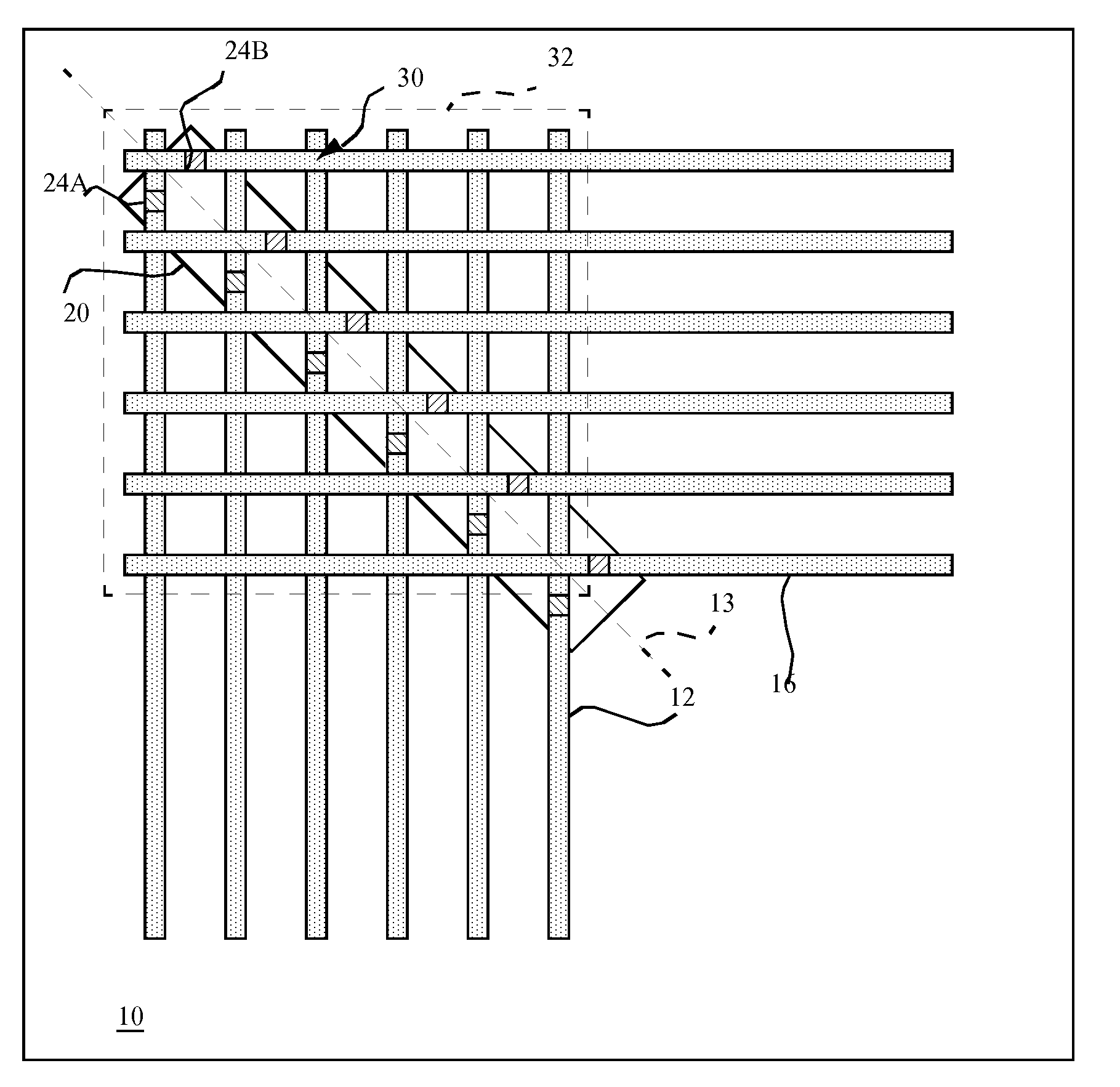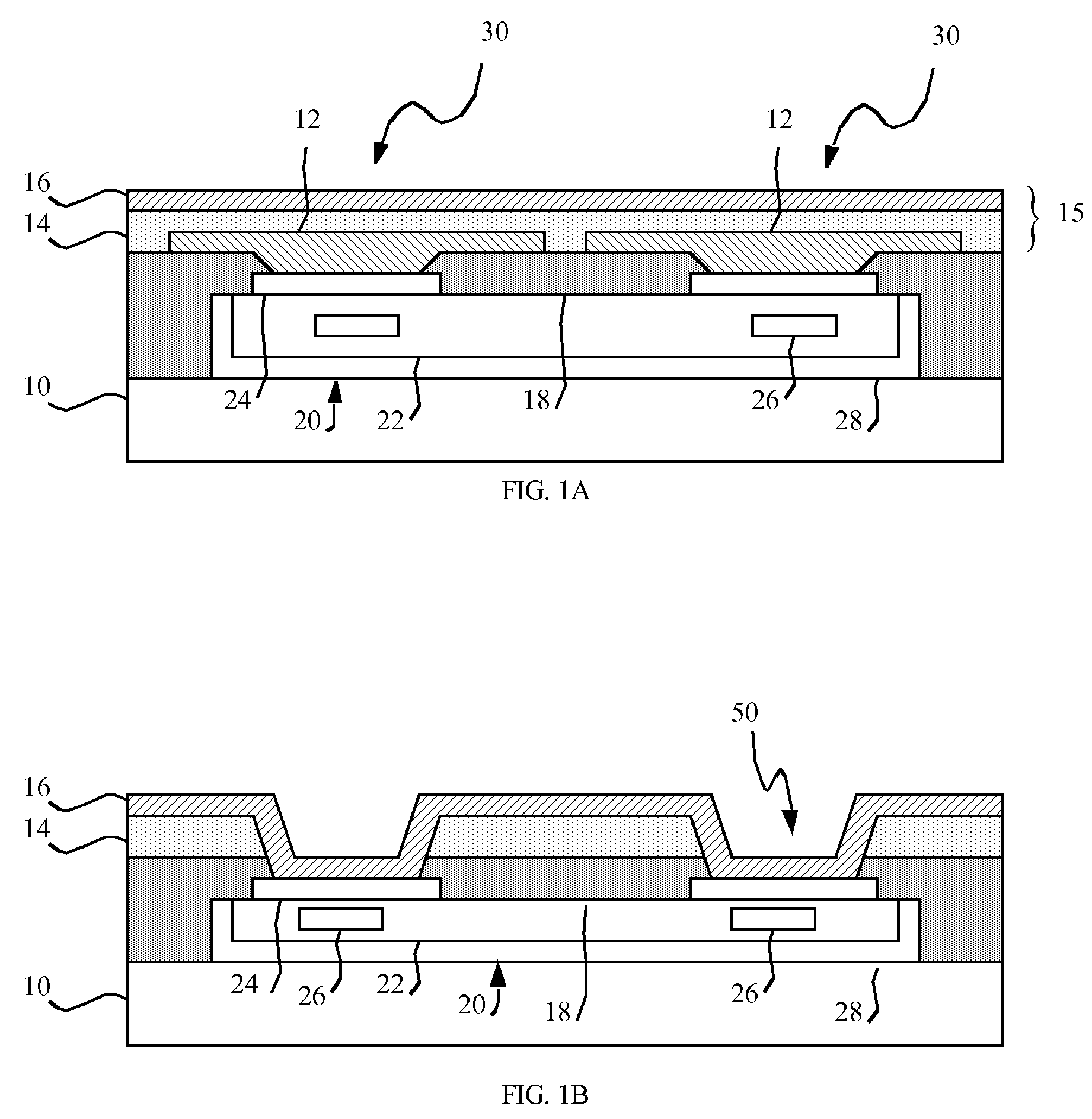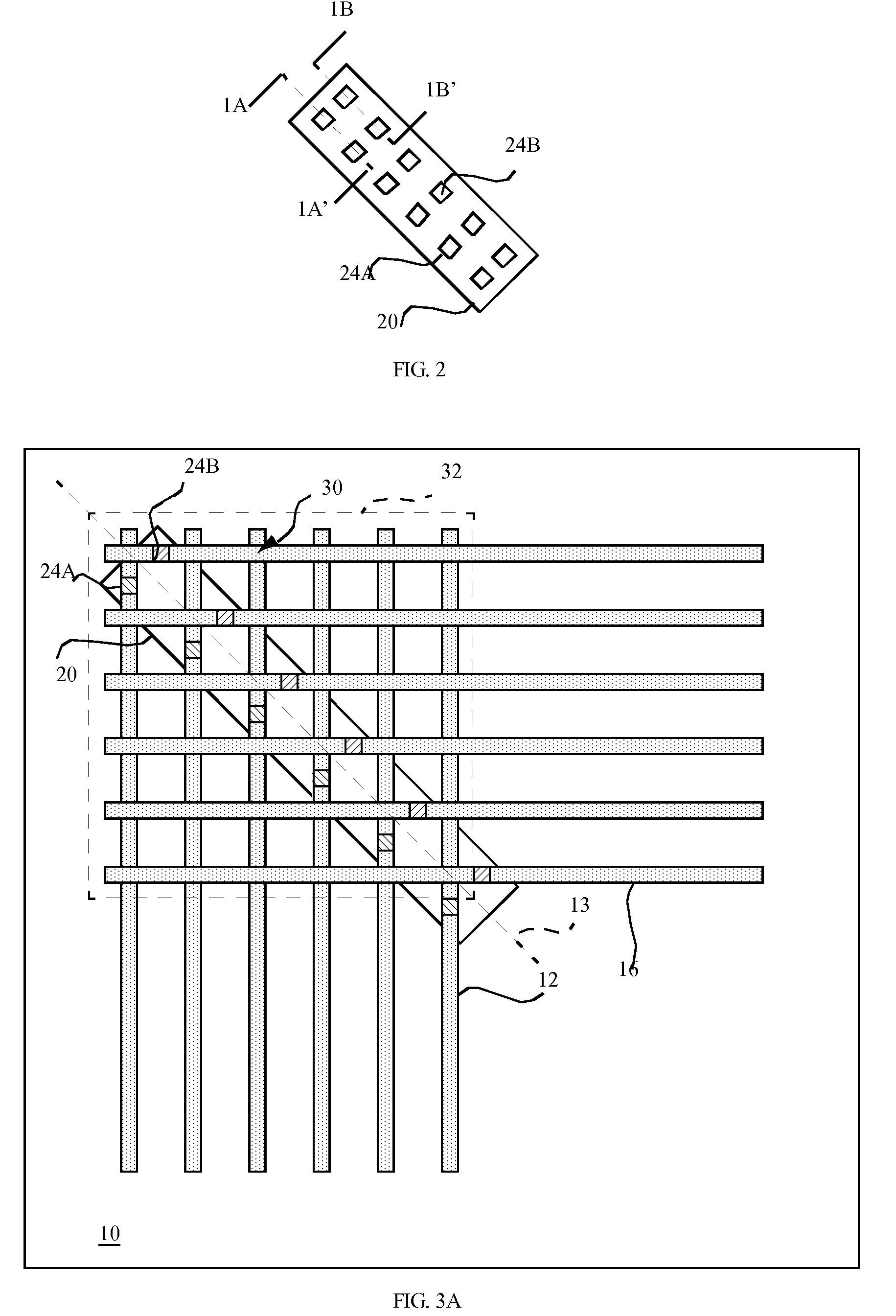Display device with chiplet drivers
a chiplet driver and display device technology, applied in the field of display devices, can solve the problems of flicker perceptible, the current necessary to drive an entire row (or column) in the display, and the limitation of the number of rows (or columns) of the passive-matrix drive devi
- Summary
- Abstract
- Description
- Claims
- Application Information
AI Technical Summary
Benefits of technology
Problems solved by technology
Method used
Image
Examples
Embodiment Construction
[0033]Referring to FIG. 3A, in one embodiment, the present invention includes a display device including a substrate 10, a first layer having an array of row electrodes 16 formed in rows across the substrate 10 in a first direction and a second layer having an array of column electrodes 12 formed in columns across the substrate 10 in a second direction different from the first direction and wherein the first and second electrodes overlap to form pixel locations 30. Referring also to FIG. 1A, one or more layers 14 of light-emitting material are formed between the row and column electrodes 16, 12. Light-emitting diodes 15 are pixels 30 that form a two-dimensional array 32 of pixels in the pixel locations and emit light when a current is passed through the light-emitting layer 14 from the row and column electrodes 16, 12. A plurality of chiplets 20 are located over the substrate 10, the number of chiplets 20 being less than the number of pixels 30, each chiplet 20 exclusively controlli...
PUM
 Login to View More
Login to View More Abstract
Description
Claims
Application Information
 Login to View More
Login to View More - R&D
- Intellectual Property
- Life Sciences
- Materials
- Tech Scout
- Unparalleled Data Quality
- Higher Quality Content
- 60% Fewer Hallucinations
Browse by: Latest US Patents, China's latest patents, Technical Efficacy Thesaurus, Application Domain, Technology Topic, Popular Technical Reports.
© 2025 PatSnap. All rights reserved.Legal|Privacy policy|Modern Slavery Act Transparency Statement|Sitemap|About US| Contact US: help@patsnap.com



